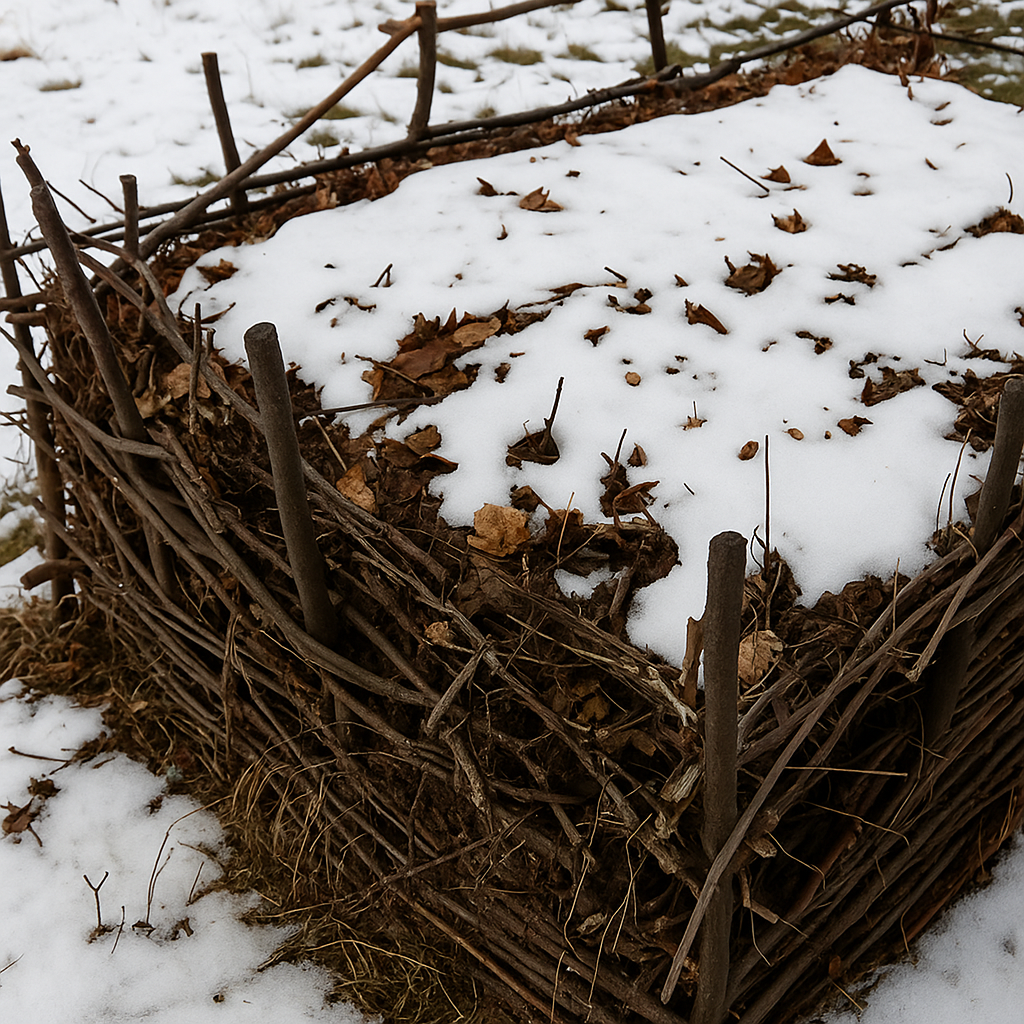
Composting in Winter – how to do it when it freezes
Winter doesn’t have to mean a break from composting. Even though frost slows down the decomposition of organic waste, a well-maintained compost can keep “working” through the cold months. You just need to know a few simple tricks to keep it active and ready for spring. ♻️
🔥 Why does compost “sleep” in winter?
At low temperatures, the microorganisms that decompose organic matter slow down or temporarily stop their activity. The compost may look inactive, but the process continues below the surface. If you protect it from freezing, the decomposition will carry on at a slower but steady pace.
🌰 How to keep your compost active in winter
1. Choose the right spot
Place your composter in a sheltered location – for example, against the south wall of your house or near a fence where it can get some sunlight. Avoid shady and windy areas.
2. Insulate the composter
Surround the composter with straw, leaves, wood chips, or an old blanket. Cover the top with a piece of carpet, a wooden lid, or a mat. This helps retain warmth and prevents the upper layers from freezing.
3. Maintain a balance between “green” and “brown” materials
Green materials (peels, vegetable scraps, coffee grounds) provide nitrogen and nutrients. Brown materials (dry leaves, cardboard, sawdust) maintain structure and prevent odors. In winter, add more brown material to keep the compost from becoming too wet and freezing.
4. Smaller pieces decompose faster
Chop kitchen scraps into smaller pieces before adding them to the compost. This speeds up the process even in cold weather.
5. Mix occasionally – but carefully
You don’t need to turn the compost often in winter. When temperatures rise above freezing, gently aerate it with a pitchfork to restore oxygen flow.
6. Keep adding compostable materials
Even if the process is slow, continue adding organic waste. Once spring arrives, the compost will “wake up” and all the collected material will decompose quickly.
7. Use an indoor collection bin
During strong frosts, store food waste temporarily in a sealed container (e.g., on a balcony or in a pantry). When it warms up, simply transfer the contents into your composter.
🌸 Extra tip for apartment living
If you don’t have a garden, you can compost indoors during winter using a worm composter – a container with worms that stay active at room temperature. This way, you reduce kitchen waste and create natural fertilizer for your houseplants. 🌱
🌼 Why it’s worth continuing
Winter composting keeps microorganisms active, shortens spring maturation time, and extends the lifespan of your composter. Most importantly – you can continue reducing waste even in the colder months.